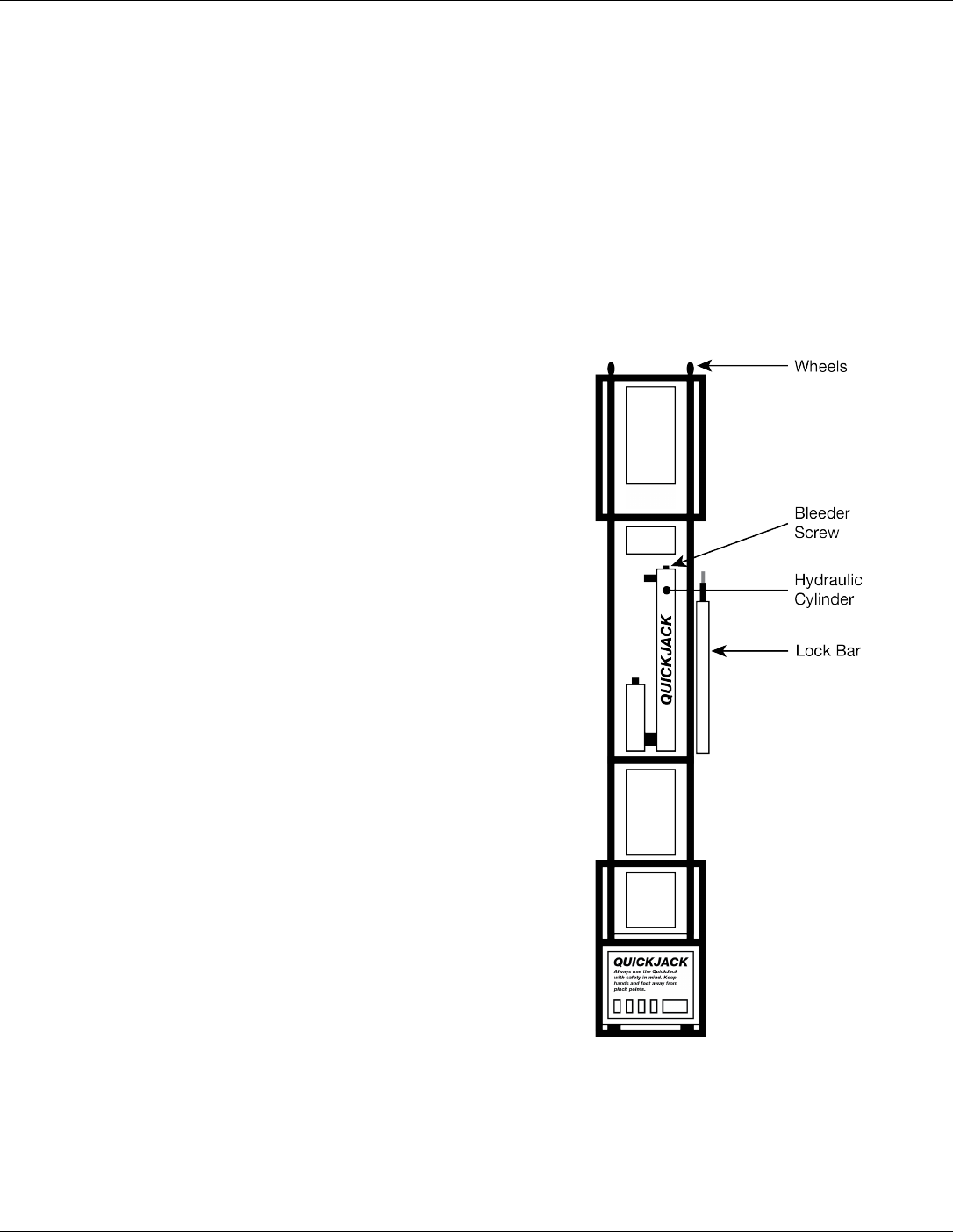Instructions / Assembly
Table Of Contents
- QuickJack Manual
- Table of Contents
- Introduction
- Shipping
- Safety
- Components
- Accessories
- Specifications
- Frequently Asked Questions
- Setup
- Tools
- Selecting a Site
- Unpacking
- Air and Hydraulic Cylinders
- QuickJack Assembly Kit
- Installing the Hydraulic Elbow Fittings
- Preparing the Short Hydraulic Hoses
- Routing the Short Hydraulic Hoses
- Preparing the Long Hydraulic Hoses
- Pressurizing the Air Cylinders
- Preparing Your Power Unit
- Power Sources for VAC Power Units
- Power Sources for 12 VDC Power Units
- Installing Fittings on Your Power Unit
- Filling the Power Unit Hydraulic Fluid Reservoir
- Check the Breather Valve
- Bleed the Hydraulic Cylinders
- Test of Proper Setup
- Operation
- Maintenance
- Troubleshooting
- Wiring Diagrams
- Labels
- Parts Sheets
- Maintenance Log
- CE Documentation

QuickJack Portable Car Jack 26 P/N 5900959 — Rev. H — May 2018
Bleed the Hydraulic Cylinders
Bleeding the Hydraulic Cylinders removes excess air pressure and fluid from the cylinders.
You should bleed the Hydraulic Cylinders
before
beginning normal operation of your QuickJack.
You need the following for this procedure:
• a rag, to wipe up excess fluid
• a 4.5 or 5 mm (3/16 inch) hex key (also called an Allen key), to loosen and tighten the Bleeder
Screw
To bleed a Hydraulic Cylinder:
1. Make sure the QuickJack Frame is flat on the ground, then raise the rear end (the end with the
wheels on it) straight up.
It may help to brace the end that stays on the
ground.
Your QuickJack Frame should now look like the
drawing to the right.
2. Using one hand, firmly hold the two sections of
the Frame and the Lock Bar in place.
⚠
CAUTION While raised, the Frame is
unstable. Have one person hold
the Frame and the Lock Bar in
place while a second person
loosens and then tightens the
Bleeder Screw, to make sure the
Frame does not fall. Keep hands
clear of pinch points at all times.
3.
Wait a few seconds for the air to move up
towards the Bleeder Screw.
4.
Using your hex key, loosen the Bleeder Screw
approximately three quarters of a turn.
What you are listening for is the sound of air
escaping through the Bleeder Screw.
When you hear air escaping, do not loosen the
Bleeder Screw any further.
Note that a small amount of fluid may also come
out of the Bleeder Screw as the air escapes;
wipe it up with your rag.
When the air stops escaping from the Bleeder Screw, and fluid is coming out
without bubbles
,
the air has been removed.
5. Hand tighten the Bleeder Screw with the hex key:
do not overtighten.
6. Lower the QuickJack Frame back down to the ground.
7. Bleed the Hydraulic Cylinder on the other QuickJack frame.










